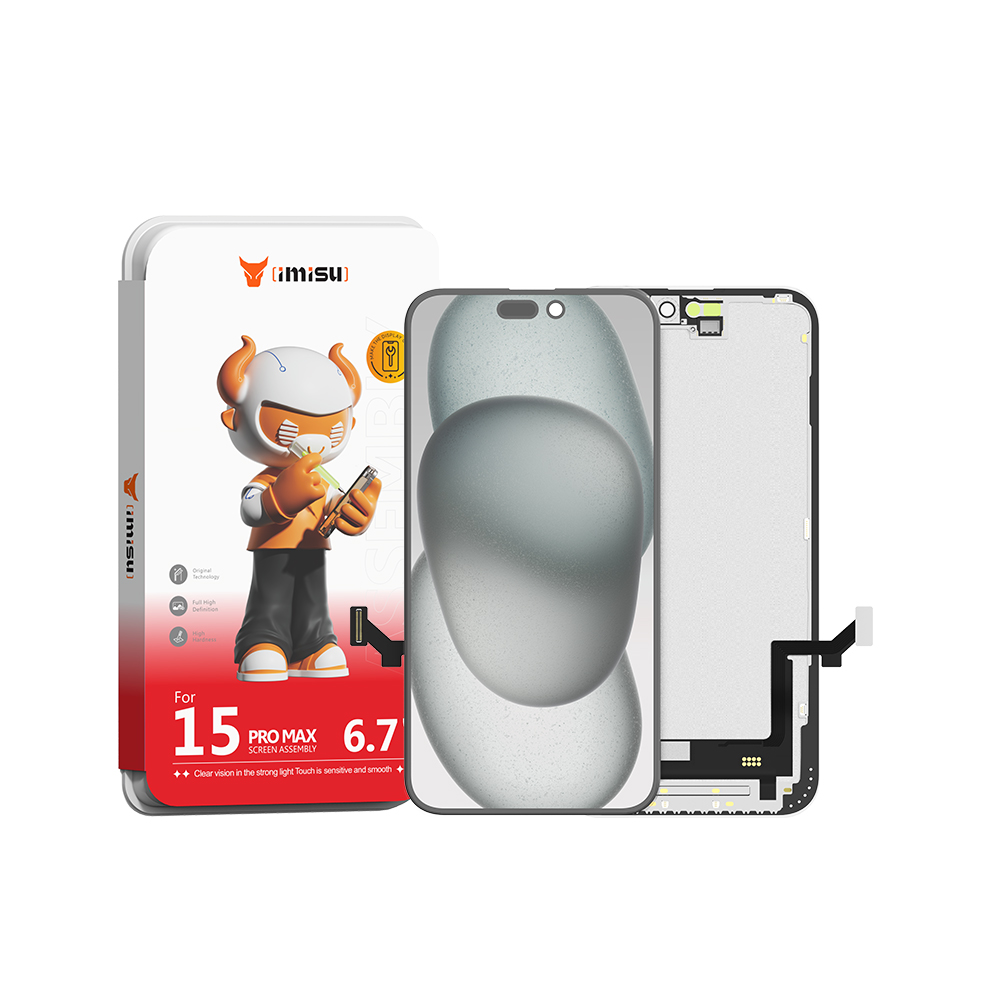In the mobile phone repair business, screen replacements are still the most frequent and high-margin services — especially for iPhones. From cracked glass to touch issues or dead pixels, customers often hold off repairs due to high costs, until they can’t tolerate it any longer.
When that moment arrives, you — the repair expert — are expected to have the answers:
- LCD or OLED — which screen is better?
- Are cheap screen assemblies worth the risk?
- Is OLED screen always more advanced than LCD?
- How can I ensure no battery drain or ghost touches?
- Should the customer fix or upgrade?
It’s a complex decision, and social media is full of divided opinions. Let’s take a look at what real users are saying online.
🗨️What Users Are Really Saying Online
@Alex92
“I actually like incell screens — good price-performance ratio. Not 100% color accurate, but to the average eye, almost indistinguishable from OEM.”
@Sophie_L
“They’re awful. I had an LCD on a 12 Pro — overheating, rapid battery drain, touch issues. Switched to a soft OLED and it was a night-and-day difference.”
@MannyTech
“You simply can’t find a soft OLED that’s affordable and reliable. Most cheap OLEDs are a risk.”
@iFixForU
“I’ve never had real functional issues with iPhone X or XS LCD replacements, except they do drain the battery faster.”
@Lila_Snaps
“My bf’s 13 Pro got an LCD and battery life is horrible now. Colors look off and ghost touches happen daily.”
@AlexWong1990
“OLEDs are supposed to be better, but I tried an iPhone 11 Pro OLED and wasn’t impressed. My iPhone 8 Plus LCD actually had more pop in color at full brightness.”
@Mia_Visuals
“There are terrible OLEDs and great LCDs. It just depends on what you buy and what kind of warranty backs it.”
Not LCD vs OLED — But Good vs Bad Screens
From the above, it’s clear:
Many people mistakenly believe OLED is always superior, and LCD screen is just a cheap compromise.

The truth?
- A low-end OLED screen assembly can be worse than a high-quality LCD — overheating, flickering, ghost touches, and even screen burn-in.
- A well-made LCD screen assembly can be bright, accurate, stable, and reliable, often with fewer long-term issues.

The real difference lies in:
- Price & value
- Touch response
- Outdoor brightness & color tuning
- True Tone support
- After-sales service & warranty
Why imisu Incell LCD Screens Are the Smarter Choice
For professional repair stores across Europe, imisu In-cell LCD screen replacements offer the perfect solution — combining performance, reliability, and affordability in one.
We designed our screens to directly solve the issues mentioned by real users.
Key Benefits:
- High Brightness 800±50 cd/m² — clear and readable in direct sunlight, no glare struggle.
- Low Heat Generation Optimized for temperature control — no overheating or backlight hot zones.
- Eye Comfort, Flicker-Free True Tone supported, no PWM flickering, reduces eye fatigue.
- Vivid, Wide Color Range NTSC ≥ 98.5% — natural, saturated colors close to original display quality.
- Responsive, Stable Touch No ghost touch, no lag — smooth multi-touch control.
- Wide Viewing Angles Works well even with sunglasses, visible from all directions.
- Reliable Warranty 12-month warranty ensures repair business peace of mind.
Power Consumption: Not Always OLED Wins
One of the biggest myths in screen replacement:
“OLED saves battery, LCD drains it.”
It depends.
| Panel Type | Power Use Characteristics |
|---|---|
| OLED | Self-emissive pixels. Saves energy in dark UIs. BUT: shows higher drain on bright content (white/Google/Maps, etc). |
| LCD | Uses constant backlight. Slightly higher base drain in dark mode, but often more efficient in bright UI environments. |
In day-to-day use, especially at high brightness, LCD may consume less power overall.
Key Advantages of LCD Screen
- No Burn-in: OLEDs can permanently retain images after long usage — LCDs don’t.
- Eye-Safe: imisu display assembly use DC dimming — no invisible flicker, ideal for sensitive users.
- Cost-Efficient: Compared to OLED, LCD gives better margins and more predictable performance.
Final Takeaway for Repair Shops
OLED is a great technology — but only when it’s built right. The same applies to LCD.
In today’s market, the type of screen matters far less than the quality of the screen.
imisu incell LCD screen assemblies are:
- Built for performance
- Calibrated for color and touch
- Designed to last
- Protected by warranty
- Priced for professional repair business growth
So, if you’re tired of gambling on random quality — switch to imisu.
Let your customers feel the difference.
Let your business grow with fewer complaints and better repairs.



